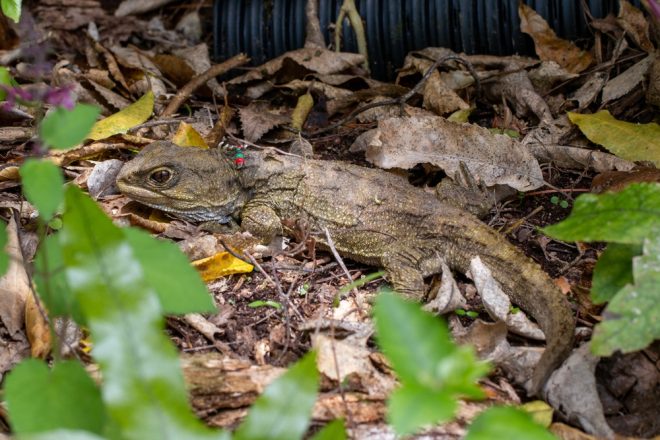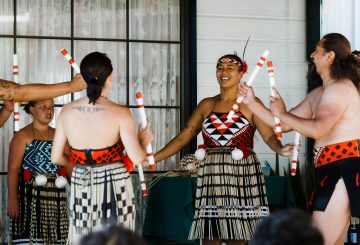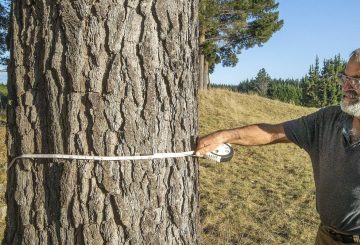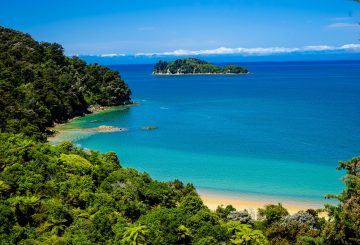この記事は、今年初めに開催されたSanctuaries of New Zealandのワークショップで、イウィ(部族)と保全をテーマに行われたプレゼンテーションをもとに、報道機関「TheConversation」に寄稿されたものです。
この記事は、今年初めに開催されたSanctuaries of New Zealandのワークショップで、イウィ(部族)と保全をテーマに行われたプレゼンテーションをもとに、報道機関「TheConversation」に寄稿されたものです。
グラスゴーで開催されているCOP26気候変動サミットで、世界の指導者たちが交渉を続ける中、これまでにいくつかの合意がなされ、気候変動と生物多様性の世界的な損失との関連性が認められました。
地球の裏側で、私たちはどこか自画自賛しているのかもしれません。アオテアロアニュージーランドのほぼ3分の1が自然保護区に指定されていますが、それでもニュージーランドは世界で最も絶滅危惧種が多く、鳥類、コウモリ、爬虫類、カエルの79%が絶滅の危険性があるか、絶滅の危機にさらされているのです。
野生生物への脅威は、哺乳類の捕食者の導入や、先住民の生物多様性を脅かす土地利用など、すべて人間の影響によるものです。
全国で600のコミュニティ保全団体に所属する4万人以上の人々が活動しているにもかかわらず、こうした努力や成果は微々たるもので、生物多様性の減少を食い止めるには至っていません。
調査によると、ニュージーランドの人々の現状の環境に対する認識は高まってきていますが、知識だけでは行動につながりません。
私たちは、自然界を理解する伝統的なシステムであるマタウランガ・マオリ(マオリの英知)を提案し、人々の意識から行動へと導く手助けをしたいと考えています。
Te Mana o te Taiaoは、ニュージーランドの生物多様性国家戦略であり、今後30年間の保全の優先順位を定めています。西洋の科学とマタウランガ・マオリの融合を推進し、環境と同様に人間にも焦点を当てることを強調しています。
定期的に行われる調査では、ニュージーランドの環境状態に対する国民の認識が著しく変化していることが示されています。20年前、大多数の人が環境は健全であると信じていましたが、現在ではほとんどの人が環境は健全でないと考えています。
この調査では、環境保護活動やボランティア活動に参加したことがあるかどうかも尋ねていますが、参加したことがある人の割合は、20年以上にわたって安定しています。
意識から行動へ
人々が自然界からますます遠ざかっていると感じるのは、次のようないくつかの主要な理由があるからです。
- 個人主義の台頭とコミュニティの衰退
- テクノロジーやエンターテイメントによる娯楽
- 都市化と格差の拡大による 「体験の消滅」
- 都市部の貧困層の、自然と触れ合う機会が減少していること
意識するだけでは行動につながりませんが、自然とのつながりを感じている人ほど、環境に対する責任感が強いという研究結果もあります。
先住民族の生物多様性を維持するためには、「意識」から「行動」につなげることが重要です。先住民は、何世紀にもわたって生物多様性の保全に大きな役割を担ってきました。
マタウランガ・マオリには、知識を行動に移すための3つの柱があります。
- 生態系科学は、生態系の相互関連性についての理解を深め、人間と自然界との関係についてマタウランガ・マオリの概念に近づけてきました。この概念の中では、もし環境が健康でなければ、人間も健康でいられないということになります。私たち自身が自然界と相互につながり、依存し合っていると考えることで、自然界への思いやりと相互扶助が生まれます。
- 事実の中に価値観や信念を埋め込むことで、知識はより記憶に残りやすく、有意義で親しみやすいものになります。これにより、人々は自然界に帰属するアイデンティティを形成し、場所とのつながりを持つことができるのです。私たちは、その場所とのつながりを感じることができれば、その場所を大切にする傾向がはるかに強くなります。
- 私たちが自然界と相互につながり、依存していることを認識することで、スチュワードシップと他の種を脅かす行為との不一致を認識することができます。
コミュニティ保全という答え
コミュニティ保全団体は、マタウランガ・マオリの概念を用いることで、ニュージーランドの生物多様性国家戦略を達成する上で、中心的な役割を果たすことができるでしょう。
ジーランディアのようなエコサンクチュアリは、すでに教育やボランティア活動を通じて、自然界とつながる機会を提供しています。ニュージーランドには80以上の保護区があり、人々が自然界に親しみ、保護活動に参加する機会を提供しています。
エコサンクチュアリは、環境修復が可能であること、保護は国の役割だけでなく、すべての人の責任であることを示すものです。エコサンクチュアリは、コミュニティーの中に自然保護のための有権者を効果的に作り上げているのです。

ジーランディアは、人々の自然界への関わり方を変える役割を担っていると考えています。彼らの20年戦略は、マタウランガ・マオリを強調と情熱を共有することで変化を促すことに重点を置いています。
[…]生物多様性戦略は、基本的に人々に関するものです…私たちの目の前にある課題は、人々が自然界に価値を見出す方法を変えることなのです。
マオリは、マオリの世界観とTauiwi(西洋)の世界を行き来しながら、常に2つの世界にまたがっています。非マオリの人はマオリの世界に足を踏み入れることはほとんどなく、その不慣れさが不快感を与えることもあります。
マタウランガ・マオリを取り入れることは、マオリの知識を流用することでも、マオリの正当な不満をごまかすことでもないはずです。むしろ、2つの世界観を持つことは、両眼視の獲得に例えられます。人は1つのレンズで世界を見るよりも、より深く、より細かいところまで見分けることができるのです。
生物多様性を維持し、向上させるためには、保護地域だけでなく、あらゆる場所で自然保護を実践することが必要です。マタウランガ・マオリの概念を取り入れることで、ニュージーランド人は生態系への帰属意識を高め、生物多様性のより良いkaitiaki(守護者)になることができるかもしれません。






























































